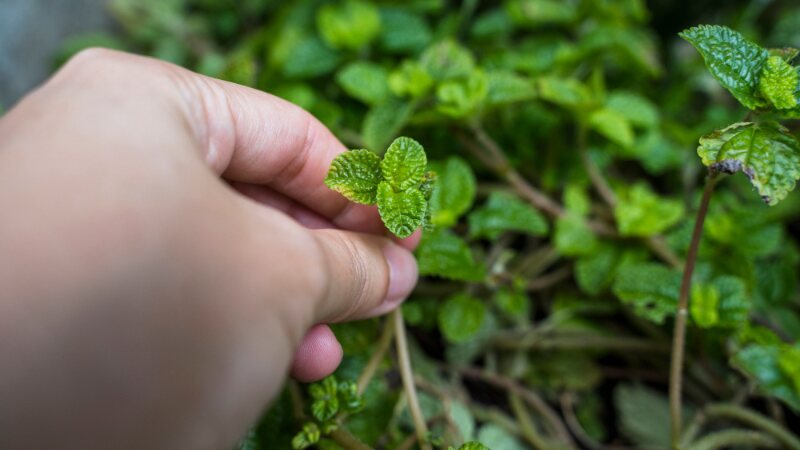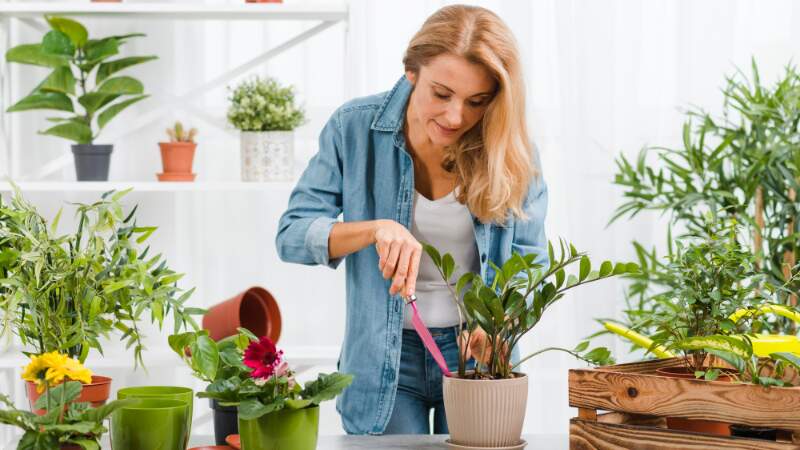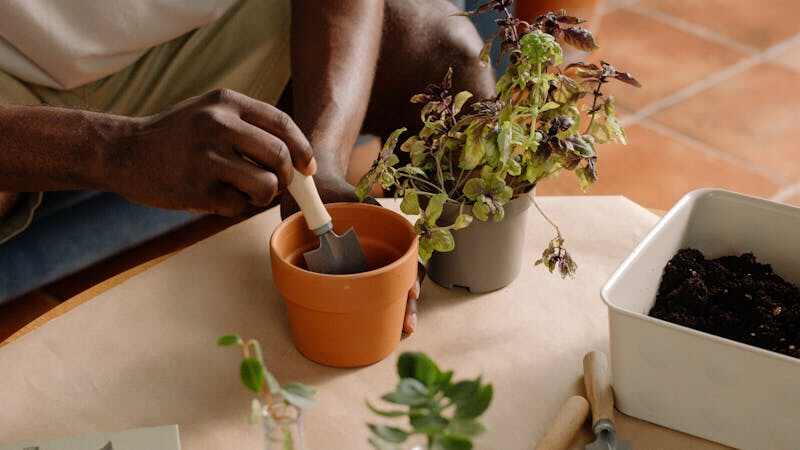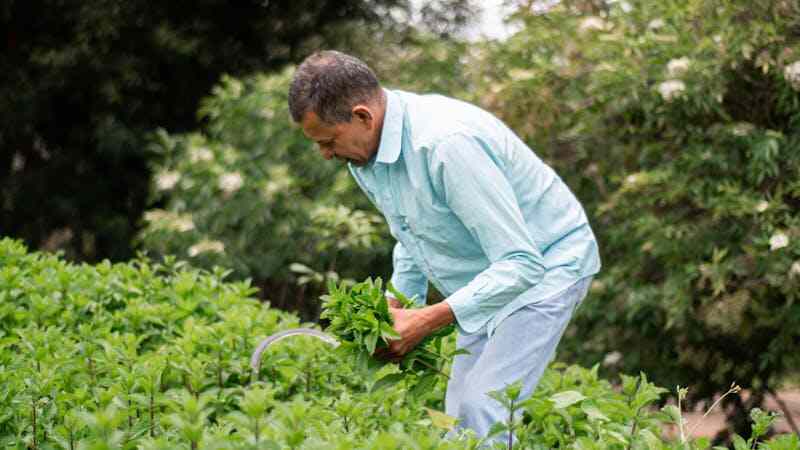Herb Gardening at Home: A Comprehensive Guide
Gardening is a fun endeavor that can transform any living space into a lush, vibrant area. Among the various types of gardening, herb gardening stands out for its practical and aesthetic appeal. Growing your Plants at home not only adds fresh flavors to your meals but also enhances your cooking experience.

Herb gardening is also incredibly versatile, as you can grow a wide range of Plants even in small spaces. Whether you’re planting in the backyard, on the balcony, or the kitchen windowsill, these gardens can thrive with the right care. Also, the added fragrance and greenery refresh your home.
In this article, we’ll dive deeper into the world of plantation and gardening, from the benefits of herb gardening to getting started, caring for your plants, and even how to harvest and use these plants. I will cover up to practical points.
Benefits of Herb Gardening

Before we discuss herb gardening in detail, let’s explore why you should consider growing herbs at home. gardening provides fresh, flavorful ingredients and countless benefits that enhance your culinary experiences and living environment.
By cultivating these plants at home, you engage in a beneficial practice that connects you to nature while promoting health and sustainability.
Freshness and taste
Nothing beats the taste of fresh herbs. You can enjoy their best flavor when you grow your own, often surpassing anything you buy at the store. Freshly harvested Plants bring a vibrant, aromatic quality to dishes that dried can not easily replicate.
Culinary variety Herbs have the power to transform a dish from OK to spectacular. From basil to thyme, each of these plants brings its unique character to your cooking, allowing you to experiment and enhance flavors. The versatility of these plants encourages culinary creativity, inviting you to explore new recipes and flavor profiles.
Health benefits
Many herbs have medicinal properties. For example, peppermint can aid digestion, while rosemary is known for its antioxidant properties. Adding fresh herbs to your diet can contribute to your overall health. providing essential nutrients and natural healing.
Cost-effective
Buying fresh Spices at the store can be expensive, especially if you use them frequently. By growing your own, you can save money and ensure you have a constant supply. This self-sufficiency allows you to enjoy high-quality ingredients at no extra cost
Aesthetic appeal
Plants aren’t just active; They are also beautiful. Their lush and varied texture can enhance the beauty of your home, whether planted in pots on a windowsill or in a garden bed. Incorporating herbs into your decor adds a touch of greenery and life to any space
Environmental benefits
Green gardening contributes positively to the environment. Air quality is improved by plants because they emit oxygen and absorb carbon dioxide. Additionally, herbs can attract beneficial insects and pollinators to your garden, promoting a more vibrant ecosystem and boosting biodiversity.
Getting Started with Herb Gardening
Now that you’re inspired to start your herb garden, let’s talk about how to get started. Getting started with plant gardening is easier than you think.
First, choose a sunny spot, whether indoors or outdoors, as most of these plants need about 6 hours of sunlight per day. Next, choose your favorite herbs, assemble the right pot or garden spot, and make sure you have well-drained soil for optimal growth.
Choosing the right herbs
Choosing the right herbs is very important. Consider the following:
Cooking Preferences: Think about the plants you use most often. Common choices include basil, parsley, cayenne pepper, thyme, rosemary, and mint.

Growing Conditions: Different Medicinal plants have different growing requirements. While some people enjoy partial shade, others flourish in full light.
Research herbs that are best suited to your climate and garden conditions, involves understanding your local growing zone, soil type, and moisture levels. Consider factors like sunlight availability and temperature fluctuations to select the plant that thrives in your environment. By choosing native or well-adapted plants, you can ensure a more successful and sustainable garden with lower maintenance needs.
Choosing a location
Flora can be grown indoors or outdoors depending on the space you have available. When choosing a space for flora gardening, consider whether you want to grow flower indoors or outdoors based on the space you have available.

Indoor shrubs thrive near sunny windowsills or in areas with strong, indirect light, while outdoor shrubs thrive in areas that receive 6-8 hours of direct sunlight per day. This careful selection of location is critical to maximizing growth and flavor.
Indoor Gardening: If you have limited outdoor space, growing plants indoors can be a great option. Choose a sunny window or a place with good lighting.
Outdoor gardening: If you have a garden, choose a location that gets at least 6-8 hours of sunlight per day.
Soil requirements
culinary plants generally prefer well-drained soil. A mixture of potting soil and compost works well for potted, while garden soil can be enriched with organic matter for outdoor planting. Greens generally prefer well-drained soil that allows for adequate drainage and aeration.
For potted herbs, a mixture of potting soil and compost provides essential nutrients, while enriching garden soil with organic matter increases its fertility for outdoor planting. Ensuring the right soil conditions is essential for healthy plant growth.
Containers for plant gardening
If you are gardening in containers, make sure they have drainage holes. Terracotta pots are a popular choice because they allow for improved airflow and humidity. When growing plants in containers, it is important to use pots with drainage holes to prevent waterlogging and root rot.
Terracotta pots are favored for their ability to allow airflow and maintain optimum humidity levels, which support healthy root growth. Choosing the right container not only affects plant health but also adds aesthetic value to your gardening space
Planting your herbs
Once you’ve chosen your herbs and prepared your location, it’s time to plant, Planting your shrubs begins with selecting a suitable spot, either in containers or garden beds, ensuring they receive adequate sunlight and well-drained soil.

Gently place the herb seedlings or seeds into the soil, spacing them according to their growth needs, and lightly cover them with soil. Water the newly planted flora thoroughly and maintain consistent moisture to encourage healthy growth
Starting from seeds You have the option of growing herbs from seed, which can be more economical but requires time and care, or buying plants from a nursery, which offers an easy start for beginners. Growing from seed allows for a wider selection of species, while plants provide immediate results and shorten the waiting period for harvest.
Ultimately, your choice will depend on your gardening experience and how much time you are willing to invest. You can start shrubs from seeds or buy plants from a nursery. Starting from seeds can be more cost-effective, but requires patience. Plants give you a head start and can be more manageable for beginners.
Planting depth and spacing It’s important to adhere to the specific planting instructions for each plant regarding depth and spacing to ensure optimal growth. Generally, smaller seeds should be sown just below the soil surface, while larger seeds need to be planted deeper to provide adequate cover. Proper spacing between plants also helps prevent overcrowding, allowing for better air circulation and access to sunlight.
Follow the specific instructions for each gardening process regarding of planting depth and spacing. In general, small seeds can be sown shallowly, while larger seeds require greater depth.
Watering after planting
After planting, water the shrubs gently to settle the soil. Keep the soil moist but not soggy as seeds germinate or plants establish themselves, Maintaining your greenery is essential for healthy growth.
Fertilizing
Herbs generally do not require heavy fertilization. A balanced, organic fertilizer can be applied every few weeks during the growing season. Be careful not to add too much fertilizer, as this can reduce the flavor.
Pruning and Pruning
Regular moving encourages bushy growth and prevents weeds from becoming leggy. When your plants are healthy, you can start harvesting. Always use clean, sharp scissors for a clean cut, which helps prevent disease.
Pest control
plants can attract pests such as aphids and spider mites. Inspect your plants regularly. If you see insects, use organic methods of pest control, such as insecticidal soap or neem oil. Encouraging beneficial insects such as ladybugs can also help.
Dealing with diseases
Common herb diseases include downy mildew and powdery mildew. Good air circulation, proper watering techniques, and spacing can help prevent these problems. If you notice symptoms, remove the affected leaves and treat them with an appropriate organic treatment.
Harvesting your herbs

Harvesting them correctly is key to maximizing their flavor and health benefits.
When to harvest.
Most herbs can be harvested once they have reached a sufficient size, usually when they have several sets of leaves. The best time to harvest is in the morning after the dew has dried, as this preserves the essential oils and flavors.
How to harvest.
Use clean shears or shears to cut the stem, cutting just above the leaf node. This keeps the plant safe from harm and promotes more development.
Storing fresh shrubs
Fresh shrubs can be stored in several ways: Properly storing fresh plants ensures that their flavor and quality are preserved for future use, There are several ways to keep your plants fresh and ready to use.
In water: Place the stems in a glass of water and cover them with a plastic bag Store in the refrigerator, For delicate herbs like cilantro, parsley, and basil, you can place the stems of the plants in a glass of water, like a bouquet.
Cover the flora with a plastic bag and store them in the refrigerator, This method helps to keep them fresh for up to two weeks. Be sure to change the water every few days to prevent spoilage.
Drying: plants can be dried by hanging upside down in a dark, dry place. Once dried, store them in airtight containers away from sunlight. A great way to preserve plants with a strong texture, such as rosemary, thyme, or oregano.
To dry herbs, tie the stems together in small bundles and hang them upside down in a cool, dark, dry place. Once completely dried, store the shrubs in airtight containers away from sunlight to retain their flavor for months.
Freeze: Chop them and mix them with water in an ice cube tray. Once frozen, transfer the cubes to a ziplock bag for easy use.
For an easy way to store them and use them in cooking, chop freshesly like dill, parsley, or basil, then mix them with water or oil in an ice cube tray. This method allows you to easily add cubes to soups, stews, or sauces whenever you need fresh flavor.
Creative Uses for Your Home Herbs

With your herbs growing, it’s time to discover how to use them creatively in your kitchen. Once they are grown, there are countless creative ways to incorporate them into your daily life. Beyond their traditional uses, fresh shrubs can enhance both the flavor and presentation of your food, while also providing health benefits.
Cooking and flavoring
Add fresh shrubs to your cooking by adding them to salads, sauces, marinades, and dressings. they can enhance the flavor of meats, vegetables, and grains. Fresh plants are a great way to enhance the flavor of your dishes, turning even the simplest of dishes into something special. Here’s how you can use them in various culinary creations.
Salad: Sprinkle fresh herbs like basil, cilantro, or mint into your salad for flavor. They can complement vegetables, fruits, and vegetables, adding a refreshing and aromatic element.
Sauces: Use like oregano, thyme, or tarragon to add flavor to sauces, whether for pasta, meat dishes, or stir-fries. Fresh flora can add depth to tomato-based sauces or brighten a creamy sauce.
Marinades: Spice up your marinades with shrubs like rosemary, sage, or parsley to add tenderness and flavor to meat, poultry, and fish. The oils and acids in marinades work well with these shrubs to enhance the flavor of grilled or roasted dishes.
Dressings: Whip up an infused dressing for salads or roasted vegetables. Fresh shrubs like dill, chives, and basil work wonderfully in vinaigrettes or creamy dressings, offering a vibrant, natural flavor.
these are a great way to liven up your cooking, and by experimenting with them you can explore a variety of flavor profiles in your kitchen.
Herb-infused oils and vinegar
Make your own herbal oil and vinegar by mixing freshshrubs with high-quality oil or vinegar, then let the mixture sit for several weeks. This method brings out the rich, aromatic flavors like rosemary, basil, or thyme, resulting in unique, flavorful condiments.
These inspiring creations are not only delicious additions to salads, marinades, and dressings but also make thoughtful, homemade gifts for food lovers. Store your -infused oil and vinegar in a cool, dark place and enjoy the flavor of herbs in your dishes.
Herbal tea

Herbal tea is a relaxing and refreshing way to enjoy the benefits of homemade. Peppermint, chamomile, lemon balm, and other plants can easily be turned into a soothing drink by steeping their fresh or dried leaves in hot water.
Herbal tea has several health advantages in addition to being delicious. For example, peppermint tea is known to aid digestion, while chamomile tea can promote relaxation and better sleep. Experiment with different combinations of plants to create your signature tea blends.
Natural remedies
Discover the medicinal properties of your herbs. For example, chamomile can help with sleep, while peppermint can ease headaches. Always do thorough research and consult a healthcare professional before using them for medicinal purposes. Many of these have medicinal properties that have been used in natural healing practices for centuries. medicinal shrubs like chamomile, peppermint, lavender, or calendula, you can create your own remedies for common ailments., especially if you have existing health conditions or are taking medications.
Decorative arrangements
Use fresh herbs to create beautiful arrangements or centerpieces for your table. Their natural beauty adds charm to your home. Fresh herbs aren’t just for the kitchen, they can also add natural beauty to your home
Collect bunches of your favorite herbs like lavender, rosemary, or mint to create charming decorative arrangements or centerpieces for your dining table. Their vibrant greenery and pleasant fragrance can enhance the ambiance of any room.
You can also hang herb bundles to dry for a rustic, farmhouse-inspired decoration that not only looks charming but can also be used later for cooking or herb crafts. These arrangements are a simple, elegant way to bring the outdoors.
Conclusion
Herb gardening at home is a rewarding experience that brings countless benefits, from enhancing your culinary creations to making a positive contribution to the environment. Whether you have a spacious garden or a small window, you can successfully grow a variety of herbs.
With the right knowledge and care, your garden can flourish, bringing fresh ingredients and a touch of nature to your doorstep. So gather your pots, seeds, and enthusiasm, and start your herb gardening journey today.
Your herbs will flourish with patience, proper care, and the right tools, turning your home into a haven of fresh scents and natural beauty. Beyond practical use, tending to your herb garden can be a rewarding way to relax, be creative, and contribute positively to the planet.
So gather your pots, soil, seeds, and a little curiosity and start this green journey. When you nurture your plants, you’ll find yourself not only growing plants but cultivating a healthier, more sustainable lifestyle. Happy herb gardening


